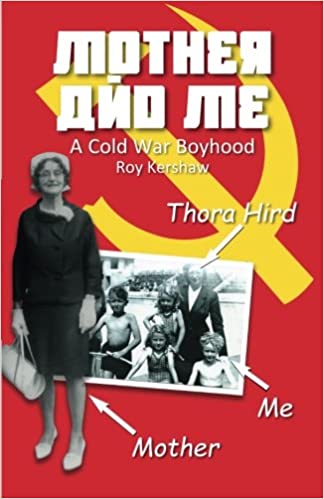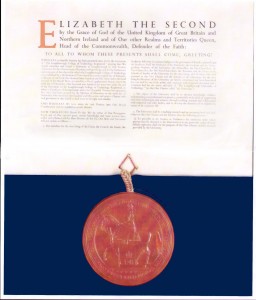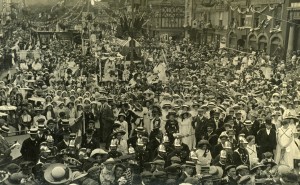Loughborough University’s Golden Jubilee
27 April 2016
This year Loughborough University celebrates its 50th birthday. On 19 April 1966 the Queen signed and sealed the royal charter of incorporation that granted university status to Loughborough College of Technology. The new Loughborough University of Technology was the first of the ten Colleges of Advanced Technology to become a university and thus the first technological university in England and Wales. In its first full academic year, 1966-67, the new university had 1742 undergraduates (of whom only 56 were women) and 141 postgraduates. In the academic year 2014/2015, the university had over 16,000 students in all.
Royal Charters or Letters Patent were sealed by appending the Great Seal of England, which has been used since the reign of Edward the Confessor in the eleventh century to authenticate documents of the highest importance. The seals were originally made of beeswax. On one side of the seal (called the obverse) the monarch was shown enthroned and on the other (called the reverse) depicted on horseback. A new Great Seal is made on the ascension of each new monarch.
Modern seals are now made from heated thermoplastic which is poured into a solid silver mould and pneumatically pressed to obtain the imprint of the matrix design. The Great Seal of Queen Elizabeth II attached to the University Charter was designed in 1953. Here is shown the reverse side with the Queen on horseback wearing the uniform of Colonel in Chief of the Grenadier Guards. On the obverse she is shown enthroned, holding the sceptre and the orb. This Great Seal of England was replaced in 2001 and documents issued since under the Great Seal now show the older Queen on the obverse, while on the reverse the image of the Queen on horseback has been replaced by the full royal coat of arms.
Jenny Clark, Loughborough University Archives
Hathern History website
18 April 2016
Check out the village of Hathern’s very own ‘wicked’ heritage website here.
Loughborough Market Place – what was the event?
18 April 2016
This picture of Loughborough market was sent to the network by Gillian Hicks. Email us and let us know if you can help identify the event taking place in it.
Loughborough – Berlin – Loughborough
13 April 2016
Josh Knight reports on a Loughborough University History trip to Berlin in 2015
There are few, if any, cities in the world that have a richer history than Berlin; from its imperial history all the way to the pivotal role it played during the Cold War. On a recent trip to Berlin, with fellow Loughborough University History students, I experienced first-hand a wide variety of history and how it’s still on display in modern Berlin.
Whilst we were in the German capital, we visited some iconic sites: the Brandenburg Gate, the Reichstag and the Bundestag (equivalent to the House of Commons and located inside the Reichstag building), Berlin Cathedral, Checkpoint Charlie, Sanssouci Park (home to the New Palace, Orangery Palace and Sanssouci Palace; located in Potsdam on the outskirts of Berlin) and we saw bits of the Berlin Wall.
The New Palace was a particularly beautiful location and its surrounding area was equally as striking. Frederick the Great built the palace at the end of the Seven Years’ War to celebrate Prussia’s victory. Whilst the palace was being renovated when we were there, it was still a beautiful building, as the pictures show. As well as being beautiful, it was extremely large; it is home to more than 200 rooms and housed one of Frederick the Great’s five identical libraries. Frederick had libraries at his residences’ that held exactly the same collection of books – all written in French – so he didn’t have to carry books with him. A final point of note from The New Palace is its decoration and the lengths that were taken to make the building beautiful. The crowning piece in one of the main rooms is a piece of rock cut from the peak of Mount Kilimanjaro that was collected by its first climbers, Ludwig Purtscheller and Hans Meyer, who were both native Germans. Naturally, this was seen as a tremendous achievement for the Germans and is one of the highlights of the New Palace.
However, my focus of study when in Berlin was its role as a global city and, more specifically, as a colonial capital. This entailed visiting multiple locations but in this account I will only mention – what I believe are – the three most interesting places we visited.
One very interesting place that we visited, thanks to a private tour, was the Charité Medical University. Here, we spoke with an expert on identifying skulls that had been collected from German colonial conflicts. We were able to see some skulls that are currently unidentified – although, unfortunately, taking photos was prohibited. In 2013, twenty identified skulls were returned to Namibia, which is where the Germans committed the first genocide of the twentieth century. This first genocide took place against the Herero and Nama tribes, both of which resided in modern-day Namibia. This genocide is not widely known by the general public and the German government do not admit to it being genocide, as this will result in enormous sums of money being paid in compensation. One can easily see how the Germans should admit guilt here but, for seemingly purely fiscal and political reasons, they have not.
A key, and often unknown, figure from Germany’s past is Alexander von Humboldt. Humboldt was effectively a geographer; he helped to establish the biogeography sub-discipline. He travelled very widely and used the whole world as his laboratory. From a geographical perspective, he was the first man to describe Latin America in a scientific perspective. We visited Humboldt University (formerly the University of Berlin), which has educated over twenty-nine Nobel Prize winners and has earned itself a prestigious reputation. Other notable achievements by Humboldt are: being one of the first people to suggest that the coasts of Africa and South America were once physically connected; he has been described as the last man who knew “everything”; he also influenced the more widely-known Charles Darwin and his subsequent work.
The final place that I will mention is our visit to the Egyptian Museum of Berlin. Housed in this museum is the 3,000-year-old bust of Queen Nefertiti, which is synonymous with female beauty. It’s the largest attraction of the museum and over 500,000 people view it each year. Germany “obtained” the bust from Egypt in 1912 and many Egyptian officials have attempted to return the bust to Egypt. As of yet, all of these attempts have failed (this process has been ongoing since the bust was unveiled in Germany in 1924). When Hermann Goering was considering returning the bust, Adolf Hitler remarked that the bust was ‘a unique masterpiece’ and rejected Goering from returning it. Within the museum, the bust has a whole room to itself, where photography is prohibited – as one will quickly find out from a guard if you look like you’re even thinking about taking a photo (photos are easily viewable through an internet search).
Although this has been a short account of my events in Berlin, the week was spent well and we took in a lot of what Berlin had to offer. From focusing on an area of Berlin’s history that is usually ignored in favour of Nazi and Cold War Germany, I found out a lot of new and interesting information. These three accounts are a summary of some things you may not know about and they certainly prompted me to do some further research on the topics.
Josh Knight
Mother and Me: A Cold War Boyhood
13 April 2016
Leicestershire-based writer Roy Kershaw has written a fascinating memoir about his childhood in Yorkshire in the 40s and 50s as the son of a communist Weavers’ Union leader and a radical mother.
As well his political upbringing, the book describes the huge social, cultural and moral changes of the time. Teenagers were breaking free from previous generations in fashion, leisure pursuits, music and sexual mores. Roy’s mother resisted these changes, clinging to impossibly high social and cultural norms which led to clashes with a son eager to test the fruits of a more permissive society.
‘Mother and Me: A Cold War Boyhood’ by Roy Kerhsaw is priced £9.99 and available from Amazon. ISBN: 9781517347536.


